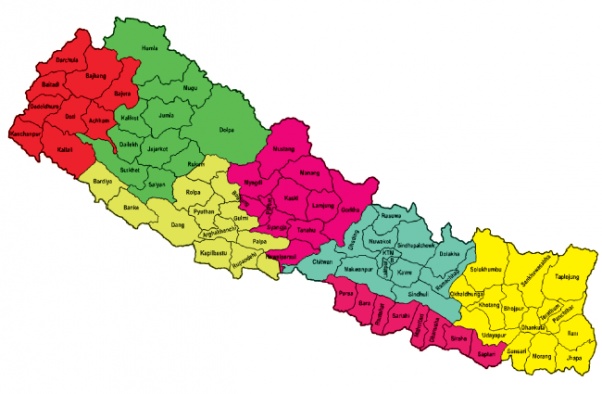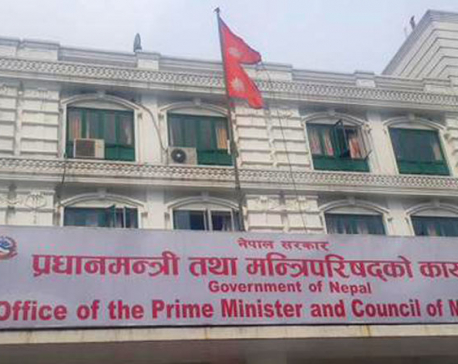
OR
Editorial
7 Provinces but No Woman CM!
Published On: January 15, 2023 08:00 AM NPT By: Republica | @RepublicaNepal

It is a huge irony that none of the chief ministers (CMs) elected in the seven provinces of the country over the past couple of days are women. Women make more than half of Nepal’s population and the Constitution of Nepal 2015 has a provision for mandatory 33 percent women’s participation in all state organs. But the implementation of this constitutional provision has been challenged ever since it was made. It would be a matter of some consolation even if at least one of the seven CMs were a woman. But sadly, that’s not the case. All the seven CMs – Hikmat Kumar Karki (Province 1), Saroj Kumar Yadav (Madhesh Province), Shalkiram Jamkattel (Bagmati Province), Khagaraj Adhikari (Gandaki Province), Leela Giri (Lumbini Province), Rajkumar Sharma (Karnali Province) and Rajendra Singh Rawal (Sudurpaschim Province) – are men. As expected, this has courted criticism from various quarters for implying that only a man can become a CM. It is not enough only to mention ‘inclusive democratic system’ in the constitution; the same has to be reflected in practice. The fact that there is not even a single woman CM shows the hollowness of the political system we have adopted.
Only because it has been mentioned clearly in the constitution that at least 33 percent of the elected members of parliament (MPs) must be women do the political parties meet this constitutional requirement even by sending more women than men to parliament through the proportional representation system. This became evident even in the recently-concluded elections. Before the elections, women leaders had made it clear that they were ready to fight elections. But at that time, women leaders were not allowed to file their nominations in the expected numbers for the first-past-the-post (FPTP) election system. After the results of the FPTP elections, the constitutional provision for mandatory 33 percent women MPs was met by sending more women than men to parliament through the proportional system. Perhaps, the situation would have been different in the case of CMs had a mandatory provision been made in the constitution for a certain number of women CMs out of the total seven CMs. Even after the 2017 general election - the first one after the country adopted federalism - no attention was paid to making a woman a CM. Though there was a clear opportunity at least to make Astalaxmi Shakya the CM of Bagmati Province, her party paid no attention to this at first. Later, she was made the CM of the province for a brief period only because of the difficult internal political situation of her party, the CPN-UML, at that time. But only after some time, when the situation changed, Rajendra Pandey replaced the only woman CM in the country.
At present, the federal government has been formed with the support of parties like the Rastriya Swatantra Party (RSP) and Rastriya Prajatantra Party (RPP). If not the traditional parties, then at least these parties could have played an active role in making a woman CM in at least a couple of provinces. But neither of these two parties is in favor of the provincial system. The RSP has openly spoken about scrapping the provinces. The RPP, too, is against federalism, especially its provincial structure. But even the CPN (Maoist Center) which claims to have fought for inclusion and gender equality in politics and waged its ‘people’s war’ with a significant support and participation of women showed no interest in making a woman CM. The erstwhile ruling coalition failed in this regard and, needless to say, even the new ruling coalition has missed the opportunity to appoint women CMs in at least a couple of the seven provinces, if not all, and set an example.
You May Like This

All chief ministers in Kathmandu with list of demands
KATHMANDU, Dec 9: Chief ministers of all seven provinces have arrived in Kathmandu to attend the first inter-provincial council meeting... Read More...

Pregnant Woman Allegedly Gang-Raped By 8 Men In Maharashtra
MUMBAI/SANGLI, Aug 5: An eight months pregnant woman from Satara was allegedly gang-raped by eight men in Sangli. The 20-year-old woman,... Read More...

Gang rape of mute woman by APF men alarms NHRC
KATHMANDU, June 16: National Human Rights Commission (NHRC) has expressed serious concerns over the gang rape of a verbally-challenged woman from... Read More...




Just In
- Health ministry to conduct ‘search and vaccinate’ campaign on May 13
- Indian customs releases trucks carrying Nepali tea, halted across Kakarbhitta
- Silent period for by-election to begin from midnight
- SC issues short-term interim order to govt and TU not to take immediate action against TU legal advisor Khanal
- National consultation workshop advocates to scale up nutrition smart community in Nepal
- Patan High Court issues short-term interim order to halt selection process of NTB’s CEO
- NEPSE inches up 0.15 points; daily turnover increases to Rs 2.53 billion
- Bagmati Govt mandates tri-lingual signboards in offices














Leave A Comment